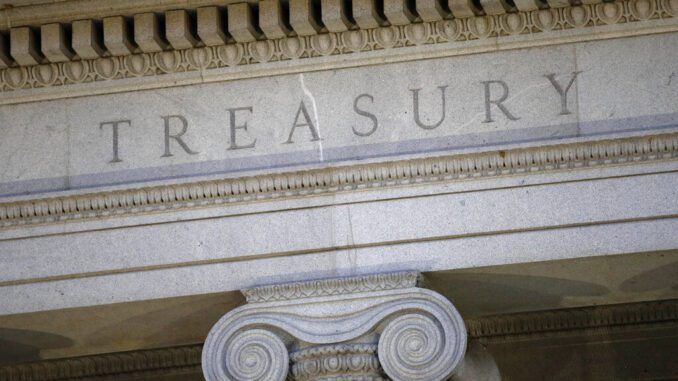
WASHINGTON, D.C. — The Treasury Department says it will employ measures to avoid an unprecedented default on the national debt this summer, but officials say those measures could be exhausted “much more quickly” than normal given the unusual circumstances of the global pandemic.
Treasury officials on Wednesday urged Congress to pass either a new borrowing limit or another suspension of the debt before a July 31 deadline. The Treasury will continue to initiate the types of bookkeeping maneuvers it has used in the past to keep the government from breaching a level that would trigger a default on the massive national debt.
“In light of the substantial COVID-related uncertainty about receipts and outlays in the coming month, it is very difficult to predict how long extraordinary measures might last,” Brian Smith, Treasury’s deputy assistant secretary for federal finance said in a prepared statement.
The government has been able to borrow enormous sums of money to finance trillions of dollars of support during the pandemic because the limit on borrowing has been suspended. But after July 31, the limit will return to whatever debt level exists at that time.
The national debt subject to the limit now stands at a record $28.1 trillion. That amount covers debt the government owes to itself in the form of commitments to Social Security and other government trust funds. The amount of the debt that is held by the public currently totals $22.1 trillion, an amount slightly higher than 100% of the entire economy and heights not seen since the huge borrowing the government did in the 1940s to finance World War II.
Borrowing has soared in recent years to finance huge budget deficits that reflected increased spending on domestic and military programs in budget deals then-President Donald Trump reached with Congress and also to cover the costs of Trump’s $1.5 trillion tax cut approved by Congress in December 2017.
Over the past year, the higher deficits have reflected the trillions of dollars the government has spent to provide support during the pandemic-triggered recession. In the latest package, President Joe Biden got Congress to approve $1.9 trillion in March to provide $1,400 payments to individuals and other types of support for individuals and small businesses.
Treasury officials did not specify what measures it will employ if Congress has not acted by the July 31 deadline to either raise the borrowing limit or simply suspend the limit for a period of time.
What Treasury essentially uses book-keeping maneuvers to avoid a debt default. They basically entail withdrawing money invested in government accounts such as the fund that covers government pensions. The money is always replaced with any lost interest once the debt limit standoff is resolved.
Congress has never railed to deal with the debt limit by the deadline although in 2011 the standoff between Republicans and the Obama administration was so prolonged that Standard & Poor’s, the credit rating agency, downgraded a portion of the country’s AAA credit rating for the first time in history.
Treasury made the announcement on the debt limit as part of its quarterly announcement of what types of debt it will issue this quarter to cover the government’s financing needs.
Treasury said it expects to borrow $463 billion in the current April-June quarter which will be part of its plans to borrow $2.28 trillion for the full budget year, which ends Sept. 30.
The $463 billion represents a significant jump from the government’s initial estimate three months ago that it would need to borrow just $95 billion in the current quarter. The change was attributed to passage of the most recent virus relief bill of $1.9 trillion in March.
The government ran up a record $3.1 trillion budget deficit last year, reflecting the COVID relief spending and a drop in revenues caused by the recession. Private economists believe the deficit for the current budget year will be even higher, possibly hitting $3.3 trillion.


